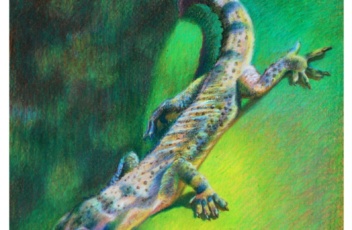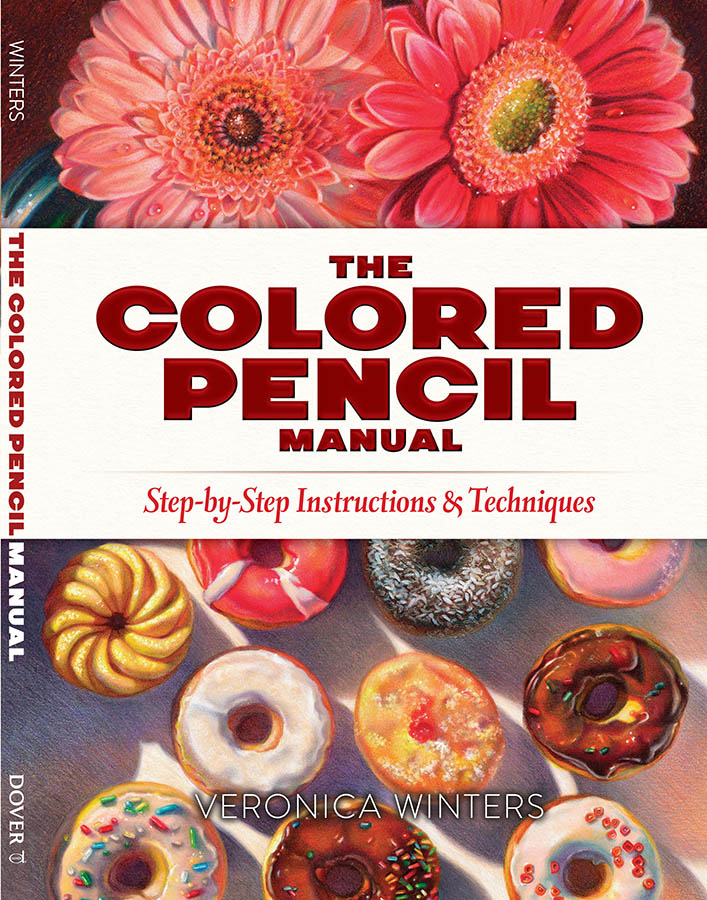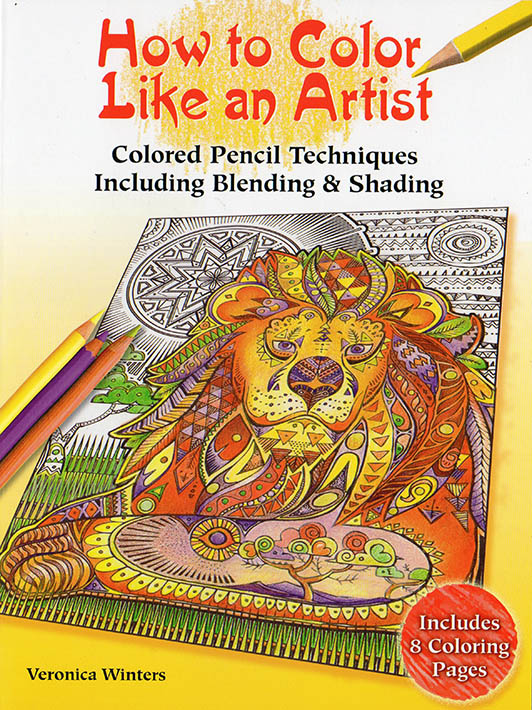In this step by step drawing demonstration you’ll learn how to layer color in colored pencil shading on toned or colored paper. You will also see how to use solvents to blend the colored pencil drawing. This is a fun drawing project to complete for both kids and adults alike.
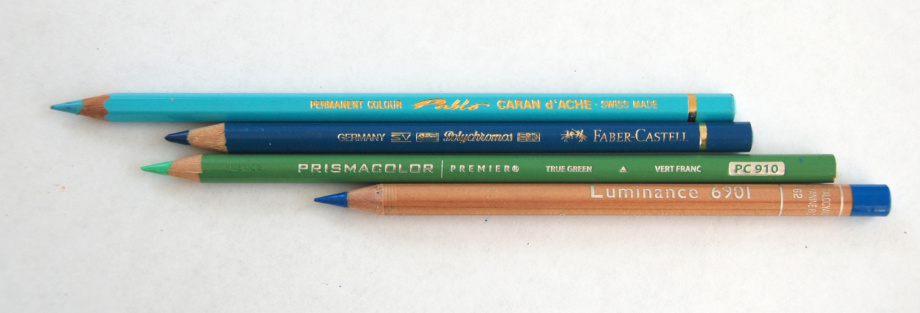
Materials:
- Canson Colorline paper. This paper can be replaced with a similar, professional toned paper.
- Prismacolor Premier colored pencils (colors are listed in steps); they can be replaced with other soft, colored pencils
- Gamsol or Caran d-Ache full blender-optional
- white transfer paper
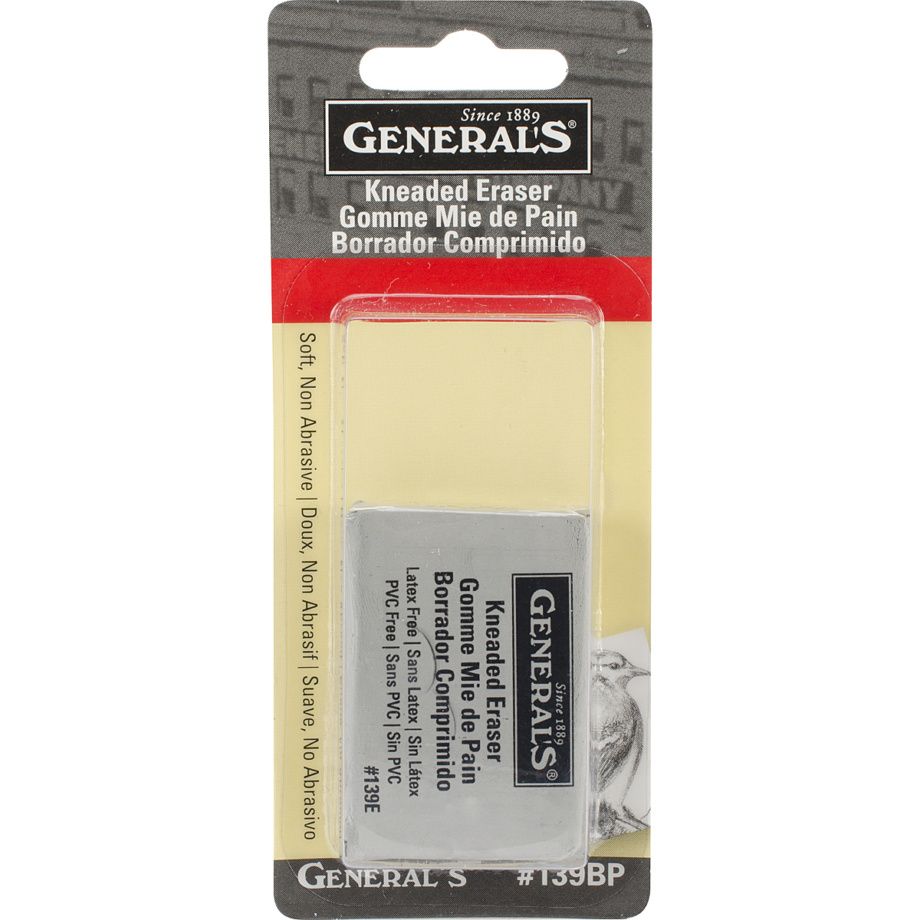
Step-by-step colored pencil drawing tutorial demonstration
Step 1 Define the shape and shadows
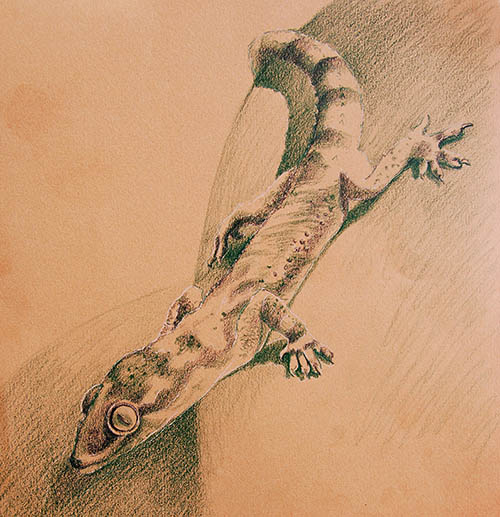
Sketch out basic outline of gecko on a sketch paper. Then transfer the outline onto your colored paper using white transfer paper. Keep the fine drawing paper clean of any residue at all times. I usually transfer the outlines using white transfer paper manufactured by Loew-Cornell. This paper lasts for years, and the lines are very easy to erase with the kneaded eraser. MAKE SURE YOU USE THE SMOOTH SIDE OF YOUR DRAWING PAPER!
When you have transferred the outline, strengthen some lines in colored pencil to separate between the shapes. The color of my colored pencil depends on the subject’s basic tone. If the subject is light, I use cream colored pencil to strengthen the outlines, if the subject is dark, I use dark brown to outline some shapes.
Use dark brown like raw umber and dark green to map out the dark spots and shadows on the lizard’s skin.
Step 2 Block-in the background
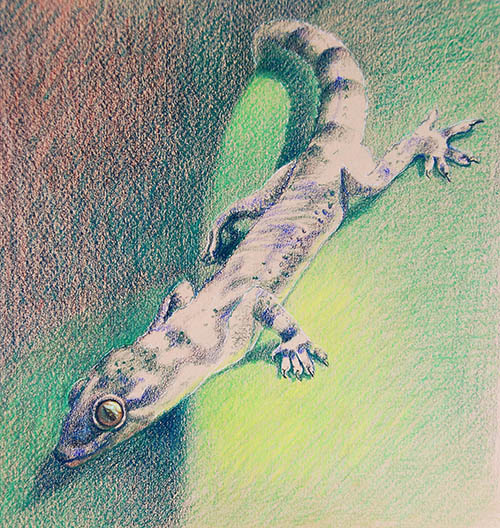
Block in the background with indigo blue and the same dark brown you’ve used before. (A combination of any dark colors would work well here). Add grass green and apple green in the background’s middle tone. Then add spring green in the light.
To strengthen the pattern on the skin, shade with a combination of violet, indigo blue, and dark green.
For the eye, use a sharp point of indigo blue and dark brown to outline the circle and to draw the iris. Shade the darker values (tones) on the left side of the eye, while deliberately using lighter tones on the right.
Notice that all colors look a lot more vibrant on colored paper as opposed to colored pencil shading on white paper.
Step 3: Blend the background
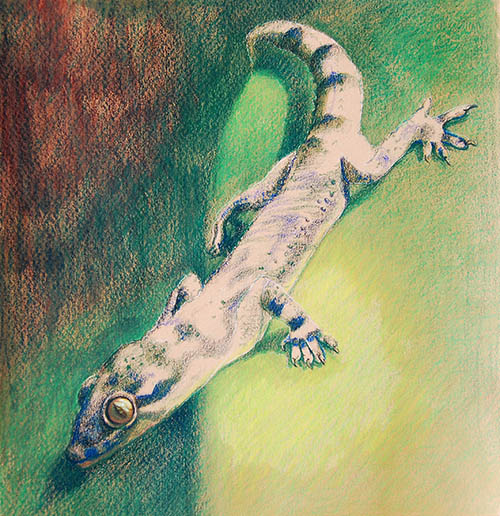
When you’ve completed shading in the background, use a solvent (like turpenoid or Gamsol) to blend the background and a few spots found on the gecko’s skin. Let it dry completely!
Make sure you use a small brush to blend the image with solvents that is not used for anything else. Solvents melt wax in the wax-based colored pencils making the surface smoother and darker.
Be careful using the solvent. Although Gamsol is a mild one and doesn't have the smell, don't inhale it anyways. Use a modest amount spreading the pigment around. To replace the solvent you can buy the caran d'ache full blender and shade the background with it.
Step 4: Colored pencil shading
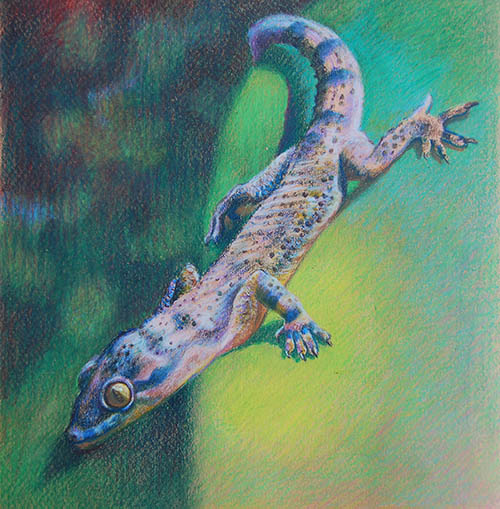
When it’s dry, shade with the same colors in the background and add a few more over the entire background space. The colors are poppy red, aquamarine, light aqua, and limepeel. OVERLAP the COLORS to get rich tones!
Now let’s draw the body. You can shade the light areas of the skin with parma violet and cloud blue, using a very heavy pencil pressure.
It’s important to see how the skin pattern curves around its body.
Don't make straight lines and repetitive shapes. Create volume and dimension by curving the uneven lines around its arms and feet.
Step 5: Work on details
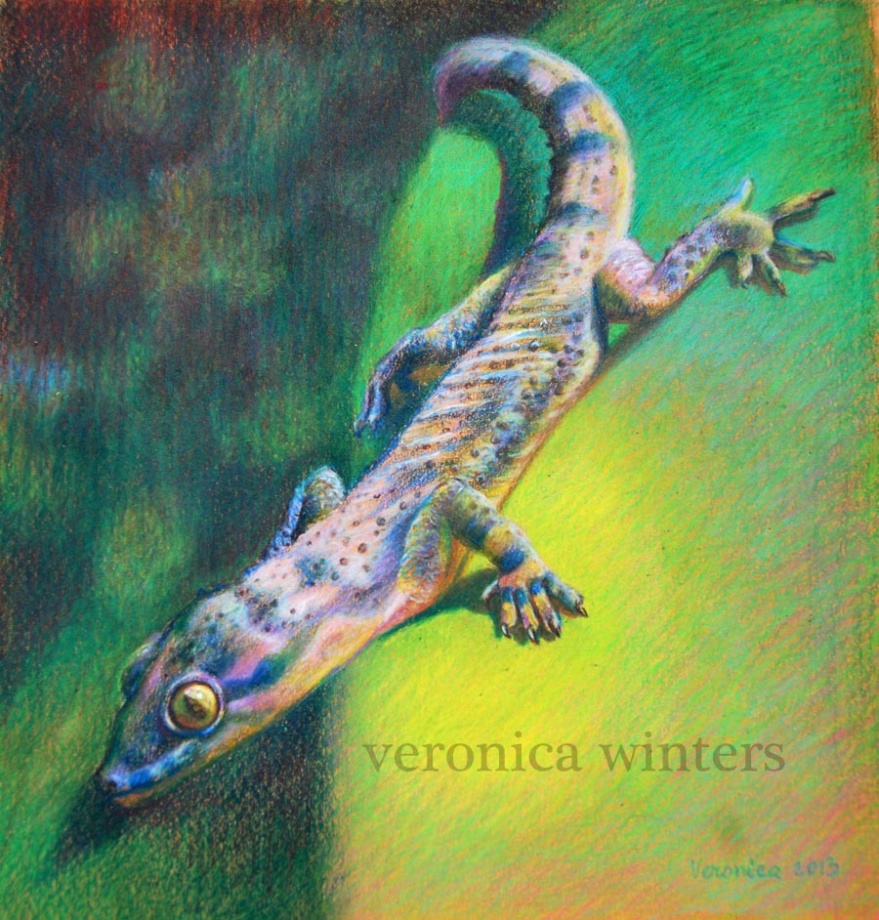
Use a touch of canary yellow and light pink to shade the reflected light on the gecko’s bottom.
Step back to look at it from the distance and check your drawing for contrast, color and shapes. If needed, re-apply the background colors once again with heavy pencil pressure. Step back. Check tones and edges. Is it dark enough? Outline a few edges in its head with sharp pencils for additional crispness and focus.
Check out all video courses here: https://veronica-winters-art-school.teachable.com/
Download free tutorials https://veronicasart.com/free-downloads/
